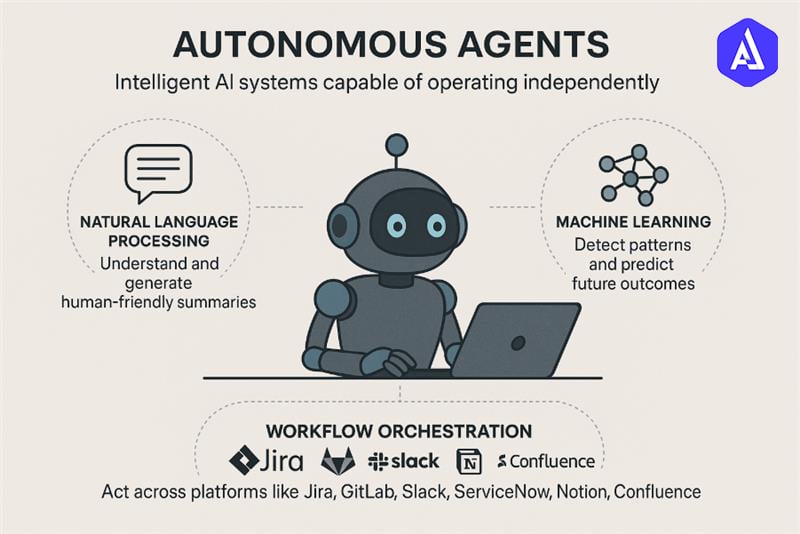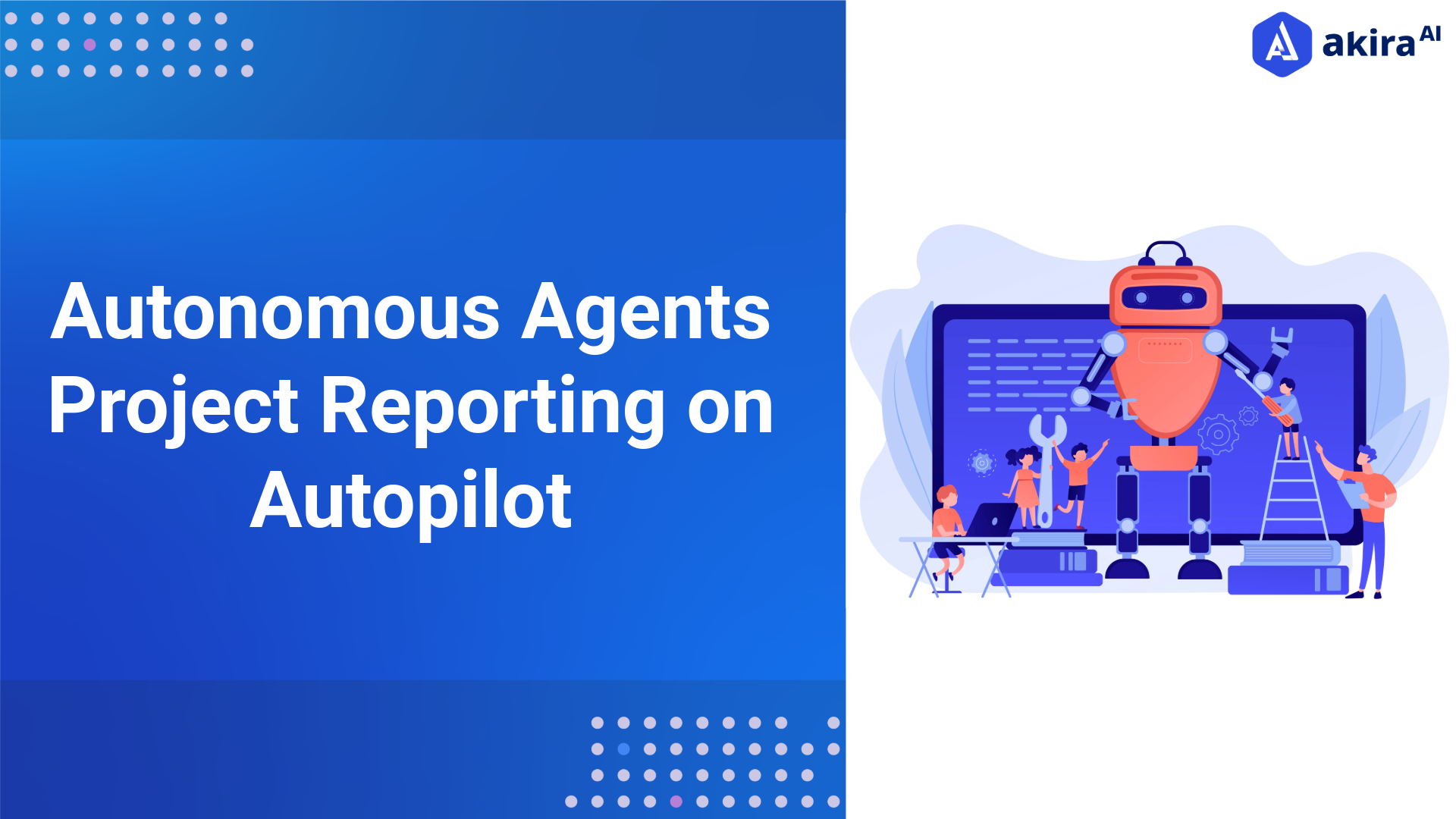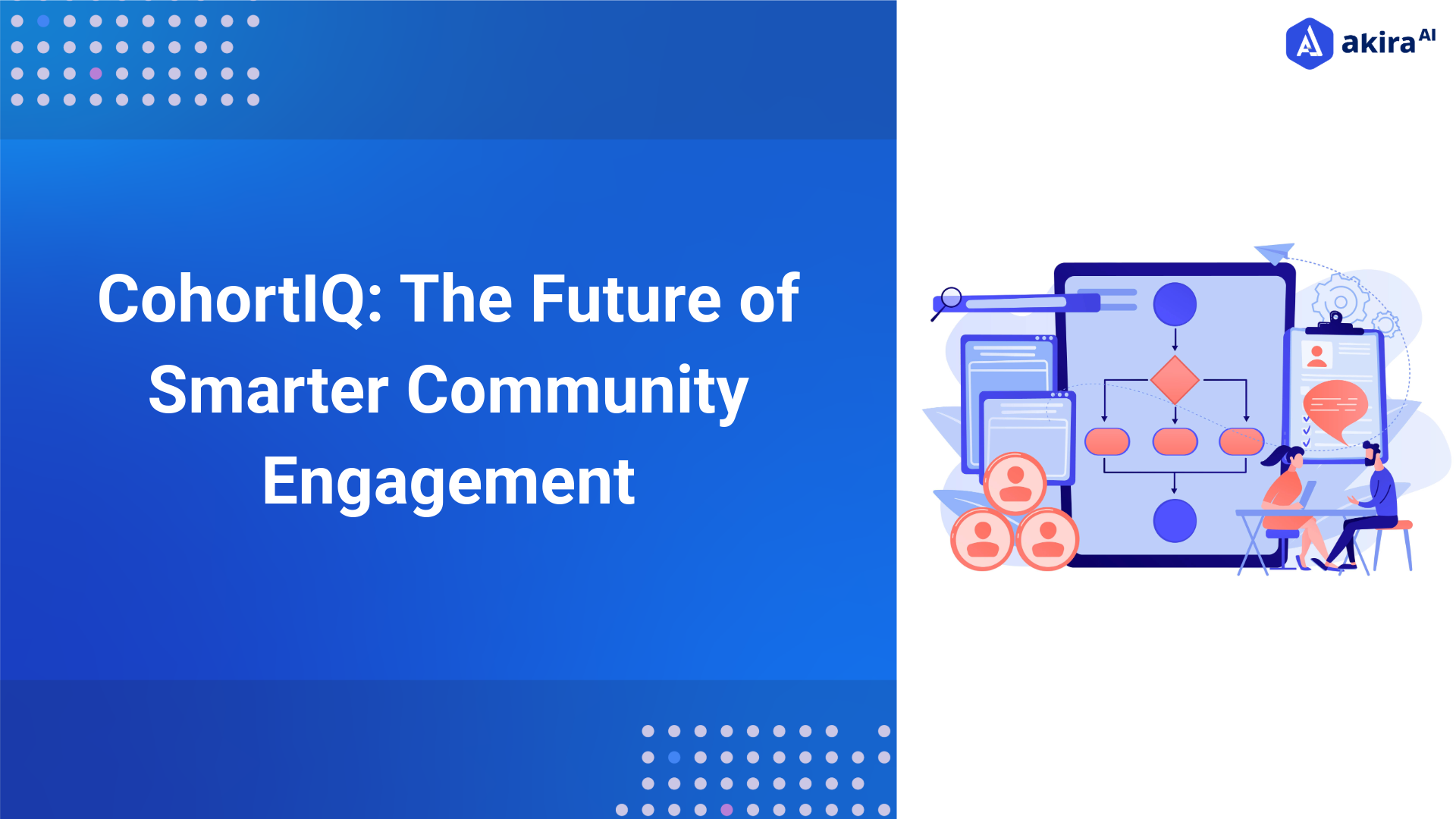Project reporting has traditionally been a chore — one that consumes countless hours across roles and industries. From developers and project managers to executives and external stakeholders, nearly every professional has spent time either creating, reviewing, or chasing status reports. Whether it’s tracking sprint progress in agile software teams or managing timelines in large-scale infrastructure projects, reporting has long relied on spreadsheets, daily standups, status meetings, and periodic email updates.
These methods, though familiar, often lead to missed updates, duplicated efforts, and inconsistent reporting. Worse yet, decision-making is often delayed due to a lack of real-time, reliable data.
But a new shift is underway — one that’s automating and enhancing reporting from the ground up: autonomous agents.
These AI-driven digital workers are redefining what it means to “report” by automating data collection, generating human-like summaries, predicting project outcomes, and enabling seamless cross-tool collaboration. With them, reporting becomes not just easier, but smarter, real-time, and action oriented.
What Are Autonomous Agents?

Autonomous agents are intelligent AI systems capable of operating independently. Unlike traditional automation tools that follow static workflows, these agents adapt dynamically, analyze contextual data, and take action — all with minimal human input.
They combine several modern technologies, including:
This means autonomous agents can gather, analyze, summarize, and visualize project data in real-time — creating always-updated reports with virtually no manual effort.
The power of these agents lies not just in automation, but in intelligent automation — the ability to reason, prioritize, and communicate insights with clarity.
Why Manual Reporting Falls Short
Before diving into how agents help, it’s worth revisiting the pain points of traditional project reporting:
-
Time-Consuming: Creating reports manually means sifting through Jira boards, checking commits, reviewing Slack threads, and gathering notes — often taking hours per week.
-
Error-Prone: Manual reports are subject to bias, outdated data, and inconsistent formatting.
-
Not Real-Time: By the time a report is ready, it may already be outdated.
-
Siloed Insights: Information lives in disconnected tools — GitHub for code, Notion for planning, ServiceNow for support — making it hard to assemble the full picture.
-
Stakeholder Mismatch: Developers, PMs, and executives need different kinds of summaries — but one report rarely fits all.
These challenges result in frustration, miscommunication, and wasted effort — exactly what autonomous agents are designed to fix.
How Agents Generate and Update Reports Automatically
One of the most transformational features of autonomous agents is their ability to generate and update reports continuously using real-time data from Project Management and ITSM (IT Service Management) tools.
How It Works
Autonomous agents integrate natively with platforms like:
-
Project Management: Jira, Asana, Trello, ClickUp, GitHub, GitLab
They pull structured and unstructured data such as:
This raw data is then filtered, analyzed, and translated into:
All of this is done automatically — with no spreadsheets, no follow-ups, and no status meetings required.
Key Benefits of Autonomous Agents in Project Reporting
Real-Time Updates Without Chasing People
One of the most frustrating parts of traditional project management is chasing updates. Project managers often spend hours tracking down information across platforms, messaging team members, and manually compiling fragmented inputs into a unified status. This constant back-and-forth not only wastes time but also slows decision-making, introduces inconsistencies, and can lead to misalignment between teams.
Autonomous agents eliminate this overhead by automating the entire update collection process. These agents work silently in the background, continuously syncing with tools and collecting data without interrupting team workflows.
They can:
By doing this, agents ensure every stakeholder — whether technical or non-technical — has access to the most current, accurate project state, without needing to send a single follow-up message.
Human-Like Summarization with LLMs
Project reports are only useful if they’re understandable. A wall of raw data or a list of numbers can be overwhelming — especially for stakeholders who aren’t deeply embedded in the project’s day-to-day execution. That’s where large language models (LLMs) come into play.
By integrating LLMs like GPT-4 into autonomous agents, these systems can now transform complex, technical, and fragmented information into clear, concise, and context-rich summaries. These updates sound like they were written by a human — but are delivered with the consistency and speed only AI can achieve.
These AI-generated summaries are:
This level of intelligent summarization helps ensure that communication is aligned, focused, and free from ambiguity.
Cross-Tool Integration = Single Source of Truth
Projects today span multiple tools and silos. Developers use GitLab or GitHub, project managers live in Jira or Asana, support teams work from ServiceNow, and documentation is spread across Notion or Confluence.
Autonomous agents unify this ecosystem:
The result? A single, consolidated report that reflects the true state of the project across all tools.
Predictive Insights and Risk Detection
Most reporting tools tell you what already happened. But by the time a problem shows up in a traditional report, it might be too late to fix it without causing delays or added costs. This is where autonomous agents stand out — by not only summarizing the past but also predicting what could go wrong next.
By leveraging historical data, machine learning models, and contextual analysis, autonomous agents can surface potential risks before they become real issues. This predictive capability allows project managers and team leads to proactively shift resources, communicate timelines, or adjust scope.
This kind of foresight enables proactive project management — solving problems before they escalate.
Always-On, Role-Based Reporting
Autonomous agents can deliver updates in multiple formats:
Everyone gets the information they need — when and where they need it — without asking or digging.





